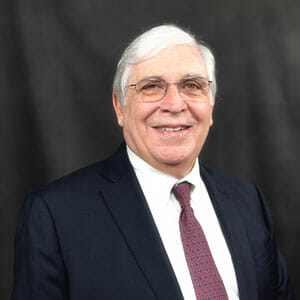


You learn that you have been named as a beneficiary of a trust. Many questions come to mind. What’s next? What are my rights? It helps to start with a few basics about trust structures, their creation and their managers.
Trusts take many forms and are generally governed by the unique provisions established by the creator of the trust. The terminology of trusts can be confusing at times. For example, it doesn’t take long in exploring trust literature to see that trusts fall into different categories. There are (1) express trusts, (2) resulting trusts, and (3) constructive trusts. We’re going to focus on express trusts. Resulting trusts and constructive trusts have different principles and rules such that addressing them deserves separate treatment than express trusts.
The duties that accompany the administration of an express trust result from the creator’s manifestation of intention of its governing principles. An express trust, according to the Restatement (Third) of Trusts § 2 (2003) is “a fiduciary relationship with respect to property, arising from a manifestation of intention to create that relationship and subjecting the person who holds title to the property to duties to deal with it for the benefit of charity or for one or more persons, at least one of whom is not the sole trustee.”
Confusion sometimes arises as to the term that denotes the creator of the trust. For example, the term “trustor” is sometimes used. “Transferor” is a less common term. “Grantor” is often used within the context of tax issues related to the formation of trusts. The term “settlor” is commonly referenced in court decisions and legal writing. When a trust is created by will, a testamentary trust, the creator is simply referred to as the “testator.”
So, now that we’ve identified the basic nature of a trust and the most common terms used to identify their creators, it’s productive to group trusts into two broad categories – testamentary trusts and living trusts. Testamentary trusts are created by will. The will must be in writing, signed and attested to in a manner defined in state law. A testamentary trust must conform to the requirements of the law for the formation of valid wills. A testamentary trust may be created and delineated in the will. On the other hand, a will may reference a separate document that identifies the settlor’s intention. duties of a trustee are set out in the trust and by statute. The duty to administer a trust according to its terms is a fiduciary duty. The duty of loyalty is part and parcel of this fiduciary duty.
Fiduciaries assume a number of roles – among them:
Duty to Take and Keep Control of Trust Property — Two of the trustee’s key responsibilities are collecting assets earmarked for the trust and ensuring the protection of those assets. If real estate is a trust asset, the trustee is responsible for the maintenance and upkeep of the property. This includes securing appropriate insurance as well as making the property productive. In the case of financial assets, such as cash or securities, the trustee must not mingle the trust property with the trustee’s own property.
Investment Oversight — The trustee has a duty to have a plan in place to address the needs and interests of current and future beneficiaries. Typically, trust investments are expected to generate income for beneficiaries while also retaining and reinvesting principal. It is not uncommon to see nonprofessional trustees violate this duty by failing to make property productive.
Taxes — The trustee must report trust income and pay income tax on any undistributed income as well as capital gains realized by the trust. In addition, the trustee informs beneficiaries of the amounts that they must report on their personal income tax returns as a result of trust distributions.
Recordkeeping — The trustee is responsible for documenting every transaction that takes place in the trust accounts. Prior to final settlement, the trustee must demonstrate to the beneficiaries that all assets and income have been properly administered and distributed.
Beneficiary rights include the right to have the trustee provide regular (often annual) accounts of trust assets. If there is suspicion as to trustee misconduct, a petition may be filed to force the trustee to account and provide proper documentation of trust activity. If misconduct is well documented and proven a court may remove the trustee and appoint a successor trustee in their place.
It is better to be a beneficiary than a disinherited heir. That said being an abused beneficiary may have the same economic effect as disinheritance. When beneficiary rights are threatened, it is often wise to engage experienced trust, estate and probate litigation attorneys.
At Hackard Law we focus on trust, estate, probate and elder financial abuse litigation in California’s largest urban areas. We take significant cases where we think that we can make a substantial difference and there are wrongdoers who can be made financially accountable for their wrongdoing. We regularly represent abused beneficiaries in the probate and civil courts of Los Angeles, Orange, Santa Clara, San Mateo, Alameda, Contra Costa and Sacramento Counties.
If you have a case that involves the enforcement of your beneficial rights to a trust we would be happy to hear your story. Call us at Hackard Law – 916 313-3030.

Michael Hackard is a top rated “AV” for over 20 years (“AV Preeminent is a significant rating accomplishment- a testament to the fact that a lawyer’s peers rank him or her at the highest level of professional excellence.”). Avvo also ranks him with their highest rating – “ 10.0 Rating – ‘Superb.’” Michael is also a “SuperLawyer” – an honor reserved for no more than five percent of attorneys in each state. [ Attorney Bio ]